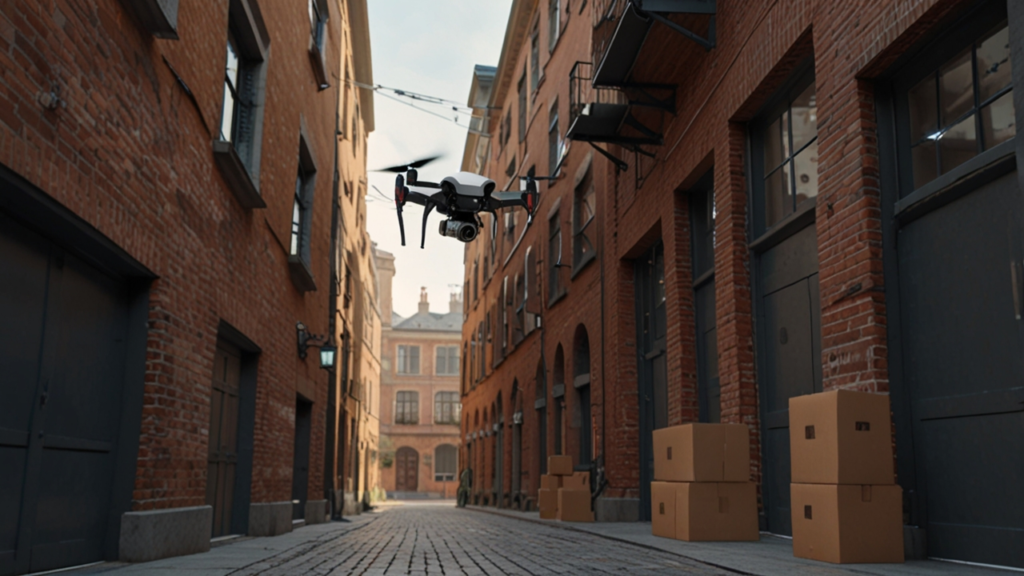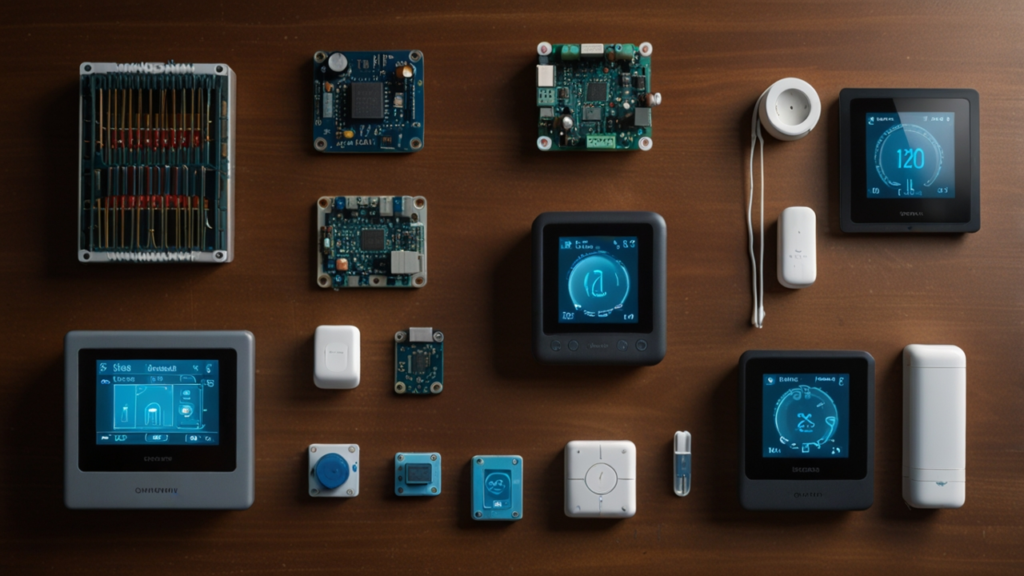IoT for Manufacturing: 7 Operational Benefits The world of manufacturing is evolving rapidly with the integration of digital innovations that streamline operations and enhance productivity. Manufacturers are increasingly adopting new technologies to overcome traditional challenges and drive efficiency. This evolution has led to a dramatic transformation in how factories operate today. Digital transformation in manufacturing creates an environment that supports real-time decision-making, enhances system connectivity, and optimizes resource utilization. Many businesses have reaped benefits from adopting modern solutions in their production lines. This shift enables organizations to maintain a competitive edge in a global market. Advancements in automation, data analytics, and process integrated systems are reshaping production floors. The growing trend toward connected solutions is driving significant improvements in product quality and operational uptime. Readers are invited to explore the practical benefits behind these changes and consider how they might apply to their own experience. Table of Contents Introduction to IoT for Manufacturing Evolution and History of IoT for Manufacturing How Industrial Connectivity Enhances IoT for Manufacturing Smart Factory Systems and Their Applications Real-World Case Studies of IoT for Manufacturing Production Optimization in Modern IoT for Manufacturing Solutions Future Trends: Connected Operations and Beyond A Fresh Perspective on Digital Advancements FAQ Conclusion Introduction to IoT for Manufacturing Overview and Fundamental Concepts IoT (Internet of Things) In today’s manufacturing landscape, integration of connected devices has reshaped operational strategies. Modern production lines rely heavily on sensor networks and data analytics to maintain quality controls and timely execution. This unified approach allows for enhanced process management and brings forth efficiencies that were once unimaginable. Advanced systems monitor key operational metrics such as temperature, vibration, and pressure in real time. This data fuels decision-making and underpins preventive maintenance schedules. For more information on foundational concepts, a detailed study on Wikipedia provides key insights. By connecting traditionally isolated equipment, manufacturers are now empowered with actionable insights. Every stage of production is optimized through the integration of real-time monitoring systems. Have you ever wondered how much improvement can come from linking these systems together? The Need for Real-Time Data and Visibility Real-time data collection is a critical element in today’s manufacturing environment. It offers a window to observe the production line as events unfold and helps mitigate potential downtime quickly. Advanced connectivity ensures that data flows seamlessly across the entire production process. This approach supports predictive maintenance and quality control, reducing unnecessary breakdowns and ensuring smoother operations. Enhanced data visibility encourages proactive problem solving and drives efficiency. Could a more transparent production process change the way you strategize your daily operations? Over the past decades, the migration from isolated instruments to integrated systems has been pivotal for breakthrough improvements. The evolution of these systems continues to drive innovation on a global scale. Evolution and History of IoT for Manufacturing Historical Milestones and Key Breakthroughs Industrial Automation The journey began in 1968 with the invention of the programmable logic controller (PLC) by Richard E. Morley for General Motors. This innovation enabled flexible and automated control over manufacturing processes. Early control systems laid the groundwork for modern connected operations. Later in 1975, distributed control systems (DCS) emerged from Honeywell and Yokogawa, allowing plant-wide management. The 1980s and 1990s saw the widespread adoption of Ethernet and networked devices that set the stage for the integration of complex monitoring systems. A timeline of these early innovations is well-documented in the World Economic Forum article. Each milestone not only improved operational flexibility but also spurred the evolution of industrial automation. Have you ever considered how these early innovations influence your daily manufacturing practices? Industry 4.0 and the Digital Revolution The current phase, known as Industry 4.0, marks the merger of digital technologies with manufacturing. Cyber-physical systems and smart automation now power adaptive production environments. This digital revolution has been driven by advances in cloud computing and sensor miniaturization. Today, interconnected devices share data across interconnected networks in near real time. The evolution has transformed manufacturing from isolated systems to eco-systems of continuous data exchange. Detailed insights on Industry 4.0 can be found in this Epicor article. The journey from traditional manual processes to fully integrated smart solutions is truly remarkable. What steps might you take to begin adopting similar evolutionary measures in your workplace? How Industrial Connectivity Enhances IoT for Manufacturing Enabling Secure and Scalable Networks Smart Home Technology Industrial connectivity is the backbone of modern production environments. Protocols such as 6LoWPAN, OPC UA, Ethernet/IP, and private 5G ensure that devices communicate securely and reliably. This connection underpins effective data exchange and real-time monitoring. These standards provide scalability and flexibility, which are essential as factories grow. Robust connectivity not only manages current demands but also paves the way for future expansion. Learn more about connectivity protocols on Telenor IoT. The stabilization of networking protocols allows organizations to retrofit legacy machinery while also introducing new devices seamlessly. How secure is your current production network, and could increased connectivity improve its reliability? Integration of Cloud and Edge Computing Technologies Cloud computing provides a centralized hub for data storage and processing, while edge computing handles real-time analysis on the factory floor. This dual system optimizes decision-making by minimizing latency. Together, they ensure that crucial data is always available when needed. Edge computing allows for immediate processing of information right where it is generated, reducing dependency on distant servers. Cloud platforms support large-scale analytics and long-term storage. Have you thought about the balance between rapid local processing and centralized data management in your operations? This integration of technologies transforms raw data into actionable intelligence. It improves production timelines and reduces overhead costs, ultimately benefitting overall plant performance. Smart Factory Systems and Their Applications Advanced Monitoring and Automation Systems Smart Cities Smart factory systems implement automated processes that continuously monitor production metrics. High-precision sensors capture variables such as temperature and vibration. This real-time data drives continuous improvement in quality and safety standards. Automation systems not only improve process reliability but also support predictive maintenance practices. Companies like Siemens have achieved product quality levels reaching 99.98% in their smart factories. When was the last time you considered the potential benefits of integrating automated monitoring in your operations? These advancements reduce human error and allow operators to focus on critical tasks. The integration of high-level monitoring devices paves the way for unprecedented operational consistency. Data-Driven Decision Making and Predictive Maintenance Modern smart factories harness AI and machine learning to predict issues before they occur. Predictive maintenance systems use sensor data to forecast equipment failures, minimizing downtime. This analytical approach helps in allocating resources faster and more efficiently. For instance, companies like Bosch have realized significant cost savings by integrating AI-driven predictive maintenance systems. An article on SmartTek Solutions highlights such achievements. Have you experienced the benefits of data-driven maintenance in your own work environment? These systems ensure a continuous flow of operations and set new standards in quality control. The transition from reactive to proactive maintenance practices encourages reliability and improved production outputs. Real-World Case Studies of IoT for Manufacturing Success Stories from Global Leaders Digital Transformation Case studies from leading companies illustrate the transformative effects of connected manufacturing solutions. Siemens, for example, uses smart factory automation to achieve an impressive 99.98% product quality. These success stories serve as critical benchmarks for modern industry practices. Bosch and GE have reduced downtime by integrating AI and IoT solutions in their production lines. Other companies like Procter & Gamble and Walmart have achieved notable supply chain optimizations using RFID and predictive systems. Detailed cases can be reviewed in industry articles such as those found on Scrobits. The success of these projects is underpinned by robust data analytics and integrative technologies. Do these examples inspire you to consider similar innovations in your production operations? Comparison of Global Implementations Different regions approach connected manufacturing with varying priorities. In the Americas, innovation and scalability reign supreme with a focus on integration with existing systems. Europe places a strong emphasis on quality, data privacy, and interoperability, whereas Asia leverages state-backed incentives to scale rapidly. Below is a comparative table that summarizes case studies from various regions: Comprehensive Comparison of Case Studies Connected Manufacturing Case Studies Company/Region Use Case Impact (%) or Key Metric Year/Timeline Siemens (Europe) Smart factory automation 99.98% product quality 2023 Bosch (Europe) Predictive maintenance via AI + IoT Downtime reduced by 30% 2023 GE (Americas) Wind turbine maintenance 20% efficiency gain 2023 Procter & Gamble (Americas) Logistics and warehouse management 50% inventory loss reduction 2023 Walmart (Americas) RFID for supply chain 15% shrinkage reduction 2023 This comparative analysis shows how different companies tailor their approaches based on regional strengths and challenges. Do these differences spark ideas for your own improvement initiatives? Production Optimization in Modern IoT for Manufacturing Solutions Enhancing Throughput and Operational Efficiency Optimizing production is at the heart of modern manufacturing solutions. Automation combined with real-time data analytics enables facilities to significantly improve throughput. Manufacturers utilize predictive data to maintain a consistent flow of operations and reduce bottlenecks. For example, facilities like Siemens’ advanced plants report nearly flawless production quality with minimal downtime. Enhancements in energy tracking also contribute to cost savings and sustainability improvements. Does your team leverage data to streamline operational efficiency and enhance output? These improvements arise from a blend of advanced automation and strategic resource management. The integration of smart monitoring systems ensures that every production cycle is optimized for efficiency. Advanced Analytics and Continuous Improvement Modern analytics platforms process data from every production line to facilitate continuous improvement. Detailed reporting and performance metrics enable managers to identify trends and adjust processes promptly. Analytics also play a vital role in lifetime equipment management. Cases have shown up to a 25% increase in efficiency gains attributed to advanced analytics. Surveillance of energy consumption and worker safety bolsters overall production quality. Are you utilizing your analytics tools to their maximum potential in daily operations? This data-driven approach is critical in ensuring that process improvements translate into tangible bottom-line benefits. Predictive algorithms and actionable insights allow plants to iterate rapidly and innovate continuously. Future Trends: Connected Operations and Beyond Emerging Technologies and Hyperautomation Looking forward, hyperautomation is set to revolutionize production processes even further. The integration of AI, robotics, and augmented reality facilitates a near-seamless link between physical operations and digital control systems. This advancement helps reduce manual intervention and accelerates decision-making. Edge AI, combined with technologies like digital twins, will support predictive simulations and remote troubleshooting. Investment in 5G and private networks promises ultra-reliable, low-latency connectivity for mission-critical tasks. Have you planned how to integrate these emerging advancements into your strategy? The evolution of hyperautomation is paving the way for a future where operational efficiency is driven by continuous innovation. Manufacturers will find that embracing such technologies is key to staying ahead in a dynamic market. Global Integration and Sustainability Focus The future of manufacturing also leans heavily towards sustainability and global supply chain integration. Companies will increasingly leverage circular manufacturing models and advanced energy monitoring systems to reduce waste. This approach not only boosts efficiency but also contributes to a greener future. There is a growing emphasis on aligning with global standards and harmonizing cross-border data flows. Regions like Europe set the standard for privacy and quality, while Asia and the Americas move rapidly to implement scalable solutions. Will your organization be prepared to meet these global challenges? Integrating sustainability into production operations is becoming a critical competitive advantage. The balance between efficiency and eco-friendly practices is expected to define new industry benchmarks. Innovative Reflections on Digital Advancements This section offers an engaging reflection on recent strides seen in the digital realm of production environments. The narrative explores newfound enthusiasm among leaders who now prioritize seamless data exchange and improved operational performance. Enthusiastic professionals are discovering creative paths to refine their processes, integrating comprehensive systems that boost overall efficiency. New models of operation have provided unexpected benefits not readily apparent in previous production years. The story unfolds with instances that highlight a remarkable journey from conventional methods to a dynamic, interconnected structure. The integration of detailed, timely information has led to discoveries that transform how every process is handled. The efficiency of routine tasks has notably improved, fostering a spirit of continuous development throughout the organization. Leaders in various fields have reported significant improvements in workflow and a renewed focus on quality data. With recent implementations, challenges once thought insurmountable are now addressed systematically. Rich insights enable teams to predict trends and fine-tune strategies effectively, ensuring that adjustments are made well ahead of anticipated issues. This new scenario is filled with excitement as many recognize that the evolution in practices has led to greater accountability and precision. The journey has been met with enthusiastic adoption and a proactive approach toward resolving potential blockages. Enthusiasm has spurred a new way of thinking about future projects, paving the way for novel perspectives on performance. The momentum carries forward with a clear message that every improvement—no matter how small—can create a ripple effect of positive change. Such inspiring progress is a reminder that the journey of innovation is ongoing and ever-evolving, inviting decision makers to push beyond conventional limits. Can you imagine how a small step forward might unveil a new horizon in your field? FAQ What defines the evolution of IoT in manufacturing? The evolution is marked by key milestones beginning with the introduction of programmable logic controllers in 1968, the adoption of distributed control systems in the 1970s, and the digital revolution brought about by Industry 4.0. These phases have advanced through increasing integration of real-time data, connectivity, and smart automation, ultimately reshaping production environments globally. How does industrial connectivity benefit production processes? Industrial connectivity provides a secure and scalable network that facilitates real-time data exchange and remote monitoring. This integration enables proactive maintenance, optimized workflows, and enhanced decision-making, which collectively drive operational efficiency and reduced downtime. Why is predictive maintenance crucial in modern manufacturing? Predictive maintenance uses continuous sensor data to forecast equipment failures before they occur. This helps prevent unexpected downtime and prolongs the lifespan of machinery, contributing to cost savings and improved production consistency. What role do emerging technologies play in the future of production? Emerging technologies such as AI, robotics, and 5G connectivity are set to further enhance operational efficiency through hyperautomation. These innovations support advanced data analytics, real-time simulations via digital twins, and seamless global integration of manufacturing systems. How can global case studies influence production optimization? Global case studies offer valuable insights into best practices across different regions. By examining real-world implementations in companies like Siemens, Bosch, and GE, manufacturers can benchmark their operations and adopt proven strategies to optimize efficiency and quality. Conclusion In summary, the integration of connected systems in manufacturing has ushered in a new era of productivity and operational efficiency. The evolution from simple monitoring to advanced analytics and predictive maintenance continues to push boundaries in production. As you explore these innovations, consider the impact that increased connectivity and data-driven decision-making may have on your own processes. The success stories and case studies presented here demonstrate real-world benefits and encourage continuous improvement. For more information on how these advancements can transform your operations, visit Smart Tech insights or check additional case studies available online. Your feedback is invaluable—have you experienced similar improvements in your workplace? Share your thoughts and success stories in the comments or Contact us for further discussion.
Discover more from Fabelo.io
Subscribe to get the latest posts sent to your email.



